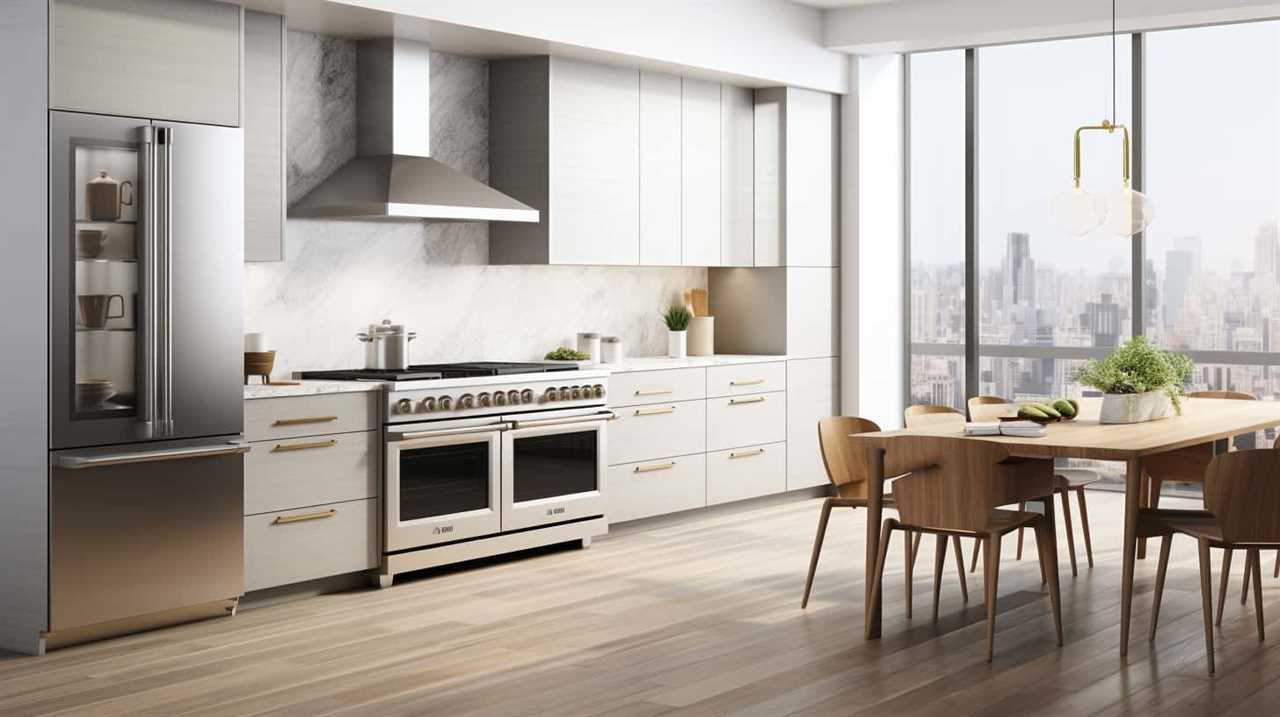We are aware of the importance of cleanliness and hygiene, which is why it is crucial to recognize the significance of sanitary appliances.
From toilets and sinks to showers and bathtubs, these essential fixtures play a crucial role in our daily lives. In this article, we will explore the different types of sanitary appliances and their functions.
Join us as we dive into the world of cleanliness and discover the benefits of having the right equipment in our homes.
Key Takeaways
- Sanitary appliances include toilets, bidets, showers, sinks, and faucets, which are essential for maintaining personal hygiene and overall health.
- The different types of toilets include flush toilets, composting toilets, bidets, wall-mounted toilets, and dual-flush toilets, each with their own benefits and features.
- Bidets offer superior hygiene compared to toilet paper, are environmentally sustainable by reducing toilet paper usage, and are cost-effective in the long run.
- Sinks, urinals, showers, and bathtubs all play a crucial role in promoting cleanliness and personal hygiene, with various options and water-saving features available for each.
Types of Sanitary Appliances
There are several types of sanitary appliances that we use in our daily lives. These appliances vary in their functions and benefits.

One common type is the toilet, which is essential for maintaining proper hygiene and sanitation. Toilets come in different designs, such as flush toilets and composting toilets, each with its own advantages.
Another type is the bidet, which provides a more thorough cleaning experience after using the toilet. Bidets offer benefits like reducing toilet paper usage and preventing irritation.
Additionally, there are different types of showers and faucets, which allow for efficient and hygienic bathing and handwashing. These appliances not only promote cleanliness but also contribute to overall health and well-being.
Understanding the different types of sanitary appliances helps us make informed choices for our personal hygiene needs.

Importance of Sanitary Appliances
Sanitary appliances play a vital role in maintaining our personal hygiene and promoting our overall health and well-being. Proper hygiene is crucial for preventing the spread of diseases and infections. By using sanitary appliances, we can effectively remove dirt, bacteria, and other harmful substances from our bodies.
The importance of proper hygiene can’t be overstated. It helps us stay healthy and prevents the transmission of germs to others. Sanitary appliances, such as soap, hand sanitizers, and toilet paper, provide us with the tools necessary to maintain cleanliness and prevent the spread of diseases.
Using sanitary appliances has numerous benefits. They help remove dirt and bacteria from our hands, reducing the risk of infections and illnesses. Proper hygiene also promotes a positive self-image and boosts our confidence. Additionally, it helps prevent bad odors and keeps our bodies smelling fresh and clean.
Functions of Toilets
What are the essential functions of toilets in maintaining proper hygiene and promoting good health?
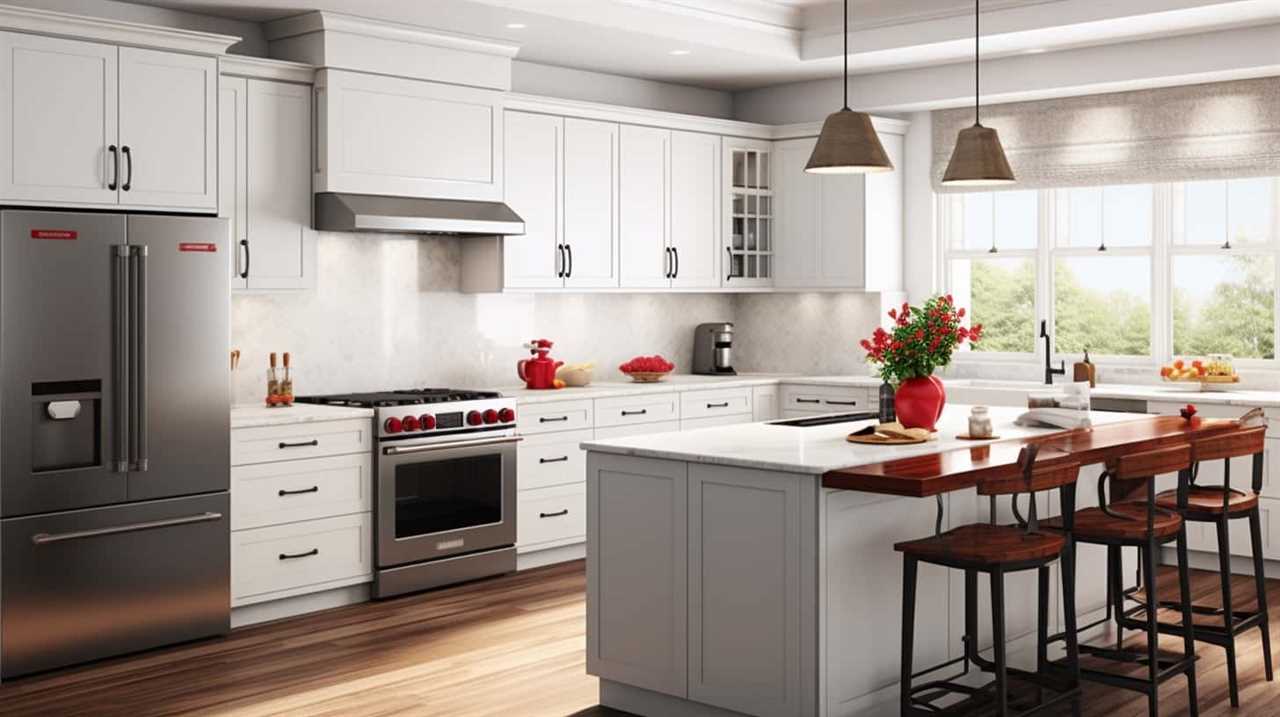
Toilets serve several important functions in maintaining cleanliness and hygiene. Firstly, they provide a convenient and private space for individuals to relieve themselves, preventing the spread of disease and minimizing exposure to harmful bacteria.
Secondly, toilets promote the proper disposal of waste, preventing pollution and the contamination of water sources.
Additionally, toilets play a crucial role in maintaining a clean and pleasant environment, as they effectively remove odors and waste from the premises.
Regular maintenance of toilets is essential to ensure their proper functioning and prevent the buildup of germs and bacteria. This includes regular cleaning, proper flushing, and timely repairs.

Different Types of Toilets
Let’s talk about the different types of toilets.
We’ve the flush toilets, which are the most common and use water to dispose of waste.
Then there are composting toilets, which use natural processes to break down waste into compost.
Another option is bidets, which offer a more hygienic and water-saving alternative to traditional toilets.

Flush Vs. Composting Toilets
When it comes to comparing different types of toilets, one key distinction to consider is the choice between flush and composting toilets.
Flush toilets, which are the most common type, use water to remove waste through a system of pipes and into a sewage system. They’re convenient and require minimal maintenance, but they can use a significant amount of water.
On the other hand, composting toilets are a more environmentally friendly option. They use little to no water and instead rely on natural processes to break down waste into compost. Composting toilets are ideal for remote locations or areas with limited access to water and sewage systems.
While they may require more frequent maintenance and monitoring, they offer a sustainable and eco-friendly alternative to traditional flush toilets.
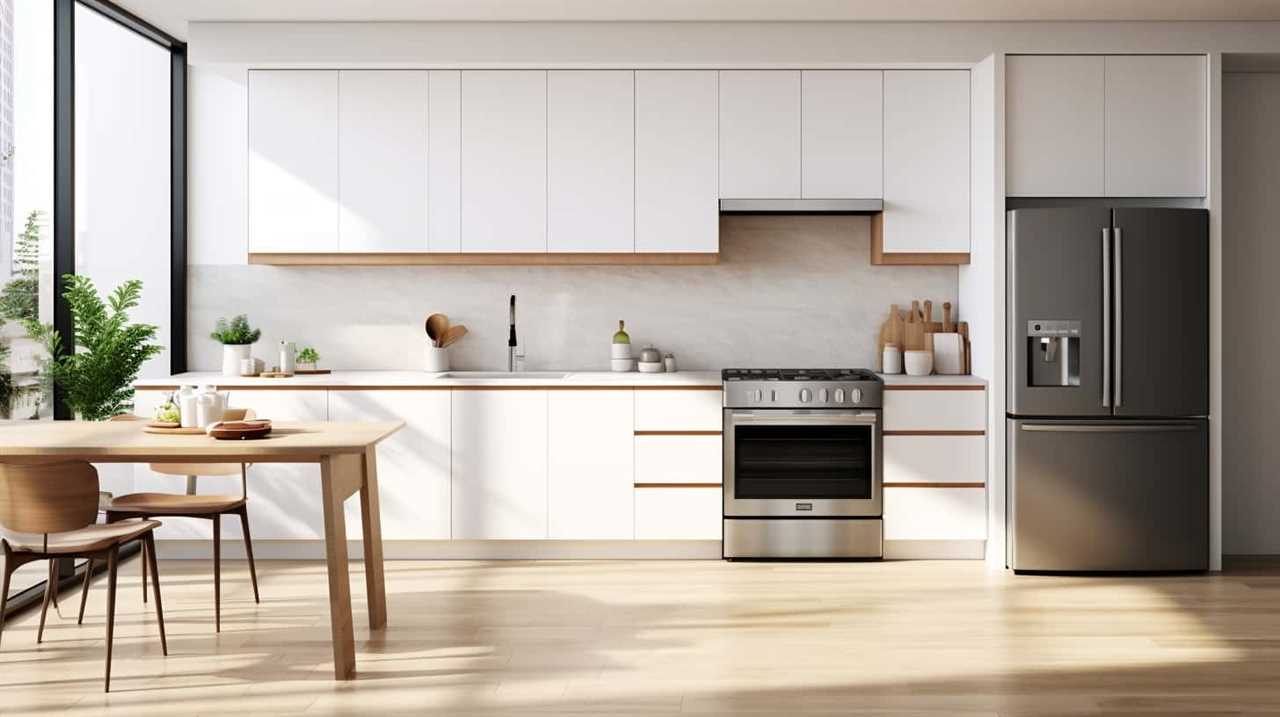
Bidets and Their Benefits
After discussing the choice between flush and composting toilets, we now turn our attention to bidets and the benefits they offer as different types of toilets.
Bidets are becoming increasingly popular due to their numerous advantages. One of the main benefits of bidets is their superior hygiene. They provide a more thorough and effective cleaning compared to traditional toilet paper, reducing the risk of bacterial infections and irritation.
Bidets also promote environmental sustainability by minimizing the use of toilet paper, which contributes to deforestation and pollution. Additionally, bidets are more cost-effective in the long run as they eliminate the need for purchasing toilet paper.
Furthermore, bidets are suitable for individuals with mobility issues or disabilities, as they offer a convenient and accessible cleaning solution.
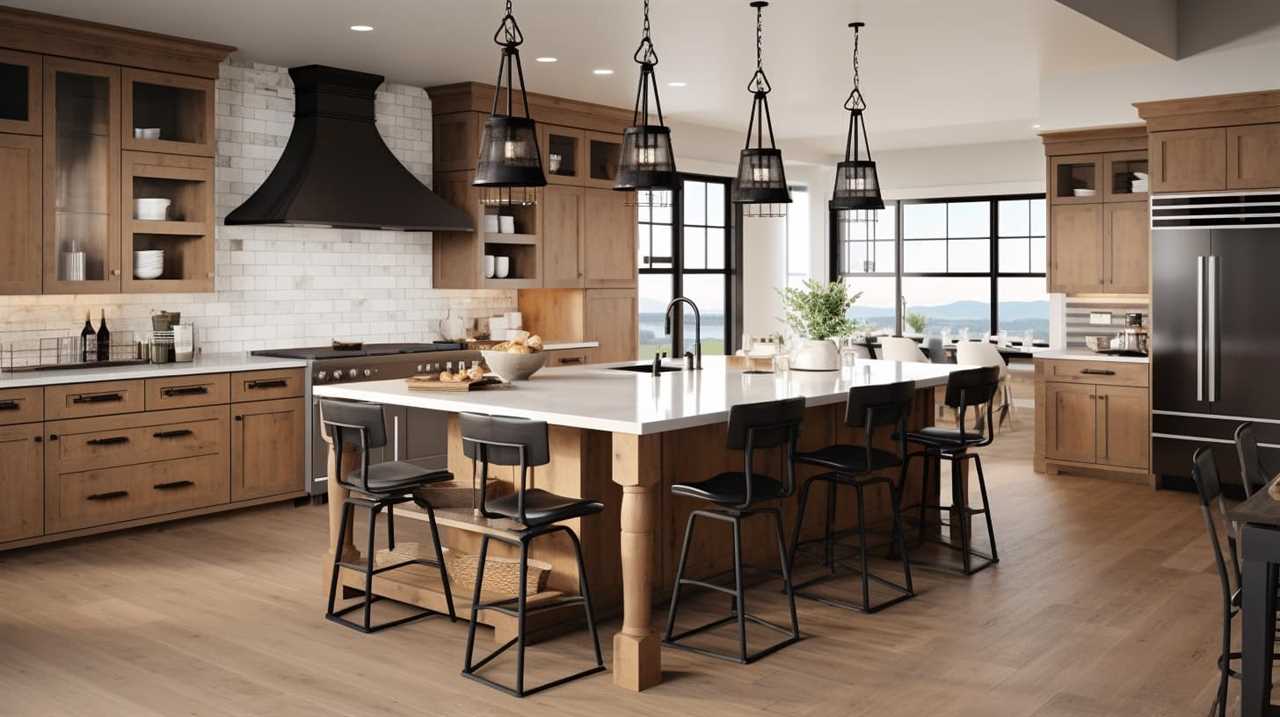
Water-Saving Toilet Options
Now let’s explore the different types of water-saving toilets available as part of our discussion on sanitary appliances. Here are three options to consider:
- Waterless toilets: These innovative toilets don’t require any water for flushing. Instead, they use a composting or incineration process to break down waste, making them eco-friendly and efficient.
- Dual flush toilets: These toilets come with two flush options – a half flush for liquid waste and a full flush for solid waste. By giving users the choice, dual flush toilets can significantly reduce water consumption compared to traditional toilets.
- High-efficiency toilets: These toilets are designed to use less water per flush, typically around 1.28 gallons or less. They achieve this through improved flushing mechanisms that maintain performance while minimizing water usage.
Benefits of Sinks in Sanitary Facilities
Sinks provide essential hygiene and convenience for users in sanitary facilities by offering a multitude of benefits.
One of the main advantages of sinks is their ability to promote cleanliness. With access to running water and soap, individuals can effectively wash their hands, reducing the spread of germs and preventing the transmission of diseases.
Additionally, sinks allow for the easy disposal of waste materials, such as excess water or personal care products. This helps maintain a clean and organized environment, improving overall sanitation levels.
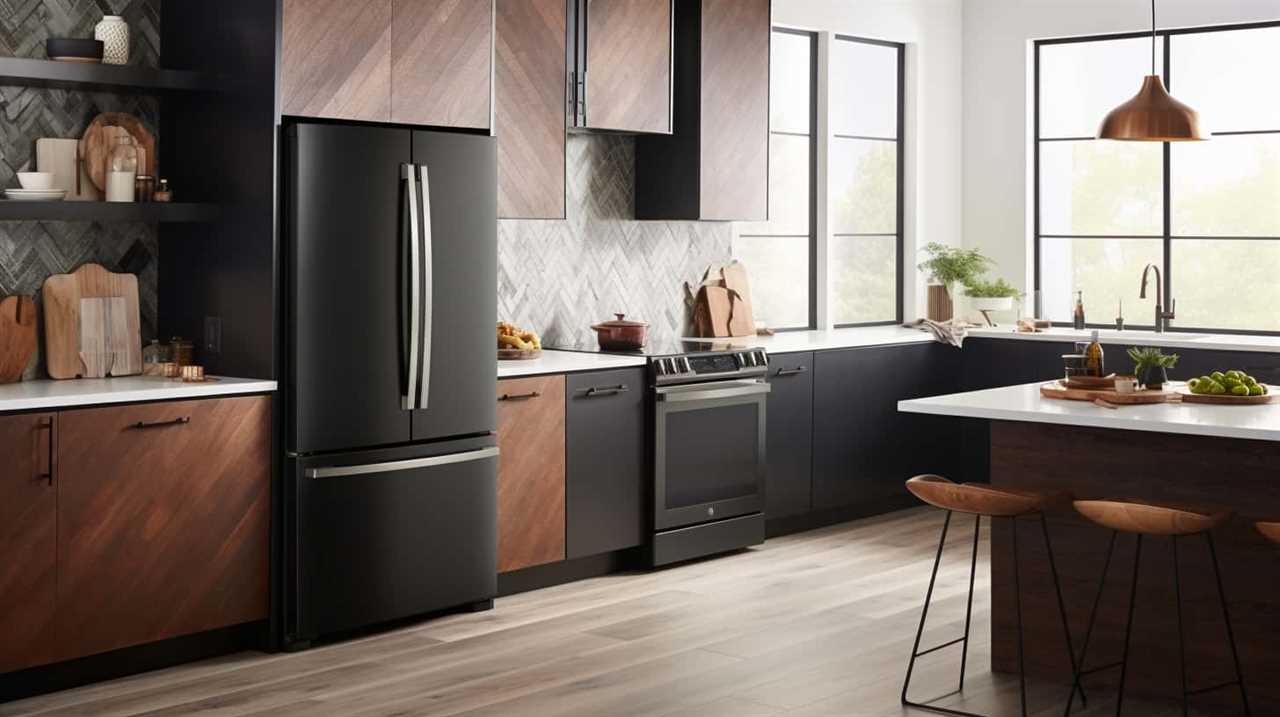
Another benefit of sinks is their versatility. They can be installed in various locations within a facility, providing users with convenient access to water for different purposes, such as washing hands, face, or utensils.
Exploring Different Sink Options
In our exploration of different sink options, we’ll discuss the various choices available to enhance the functionality and aesthetics of sanitary facilities. When it comes to sinks, there are two popular options that can greatly elevate the design of any space: vessel sinks and wall-mounted sinks.
- Vessel sinks: These sinks are installed above the countertop, creating a striking focal point in the bathroom. They come in a wide range of materials, including glass, porcelain, and stone, allowing for endless design possibilities. Vessel sinks are known for their elegance and can add a touch of luxury to any bathroom.
- Wall-mounted sinks: These sinks are attached directly to the wall, creating a sleek and minimalist look. They’re a great option for small bathrooms as they save space and provide a clean and uncluttered appearance. Wall-mounted sinks are available in various shapes and sizes, making them versatile for different bathroom styles.
The Role of Bidets in Maintaining Hygiene
As we continue our exploration of sanitary appliances, let’s delve into the importance of bidets in maintaining optimal hygiene. Bidets offer numerous benefits that contribute to a higher level of cleanliness and comfort.
| Benefits of Bidets | Bidet Installation Process |
|---|---|
| 1. Enhanced hygiene | 1. Locate a suitable spot in the bathroom for the bidet |
| 2. Gentle and effective cleaning | 2. Connect the bidet to the existing water supply |
| 3. Reduction in toilet paper usage | 3. Install the bidet according to the manufacturer’s instructions |
Firstly, bidets provide enhanced hygiene by effectively cleaning the genital and anal areas, reducing the risk of infections and unpleasant odors. They offer a gentle and thorough cleaning experience, ensuring a higher level of cleanliness compared to using toilet paper alone. Additionally, bidets help in reducing the usage of toilet paper, which is beneficial for the environment and your wallet.

To install a bidet, you need to locate a suitable spot in the bathroom, usually near the toilet. Then, connect the bidet to the existing water supply and follow the manufacturer’s instructions for installation. It is a straightforward process that can be easily accomplished with basic plumbing skills.
Understanding the Different Bidet Varieties
We’ll now explore the various types of bidets available, offering a comprehensive understanding of their different varieties.
Here are three key bidet features to consider when looking for the perfect bidet for your needs:
- Spray Patterns: Bidets come with different spray patterns, such as oscillating, pulsating, and aerated sprays. These variations allow for a customized and comfortable cleaning experience.
- Temperature Control: Some bidets offer adjustable water temperature, allowing users to choose between warm and cold water for cleansing. This feature adds an extra level of comfort and personalization.
- Installation Options: Bidets can be installed in different ways, including standalone units, toilet seat attachments, and built-in bidet toilets. It’s essential to consider your bathroom layout and plumbing configuration when selecting the right installation option.
Urinals: A Convenient Sanitary Solution
Urinals offer numerous hygiene benefits, making them a convenient and practical choice for public restrooms.
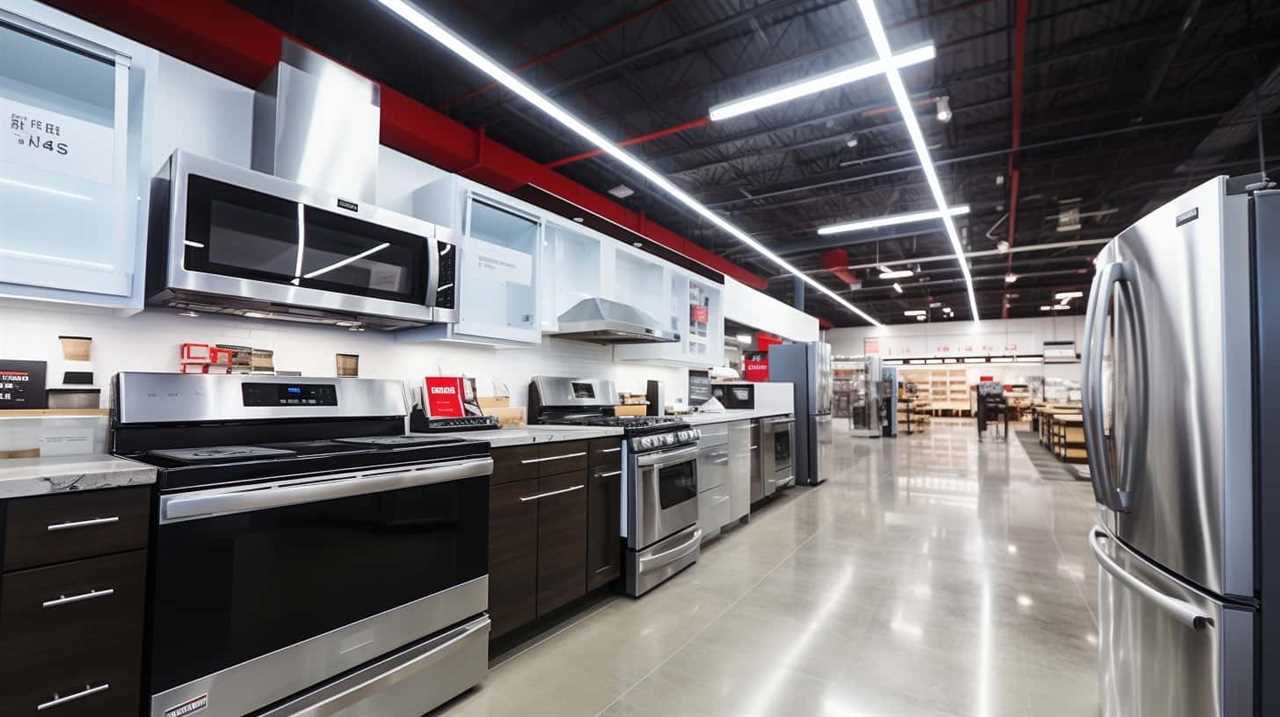
Their space-saving design is particularly advantageous in areas with limited space, maximizing the number of fixtures that can be installed.
Additionally, urinals are equipped with water-saving features, helping to conserve water and reduce environmental impact.
Hygiene Benefits of Urinals
Using urinals provides several hygiene benefits that contribute to a convenient and sanitary solution for maintaining cleanliness in public restrooms. Here are three key hygiene benefits of urinals:
- Reduced contact with surfaces: Urinals allow users to urinate without having to sit on a potentially dirty toilet seat. This reduces the risk of coming into contact with germs and bacteria that can be found on toilet surfaces.
- Improved cleanliness: Urinals are designed to direct urine flow efficiently, minimizing splashing and reducing the chances of urine coming into contact with the surrounding areas. This helps to keep the restroom cleaner and more pleasant for everyone.
- Water conservation: Urinals typically use less water per flush compared to toilets. This not only helps to conserve water but also reduces the environmental impact associated with water consumption.
Space-Saving Design Advantages
One advantage of urinals is their space-saving design, which allows for efficient use of restroom facilities. Urinals are specifically designed to take up less space compared to traditional toilets. This is especially beneficial in high-traffic areas such as public restrooms, where maximizing the number of fixtures is crucial.
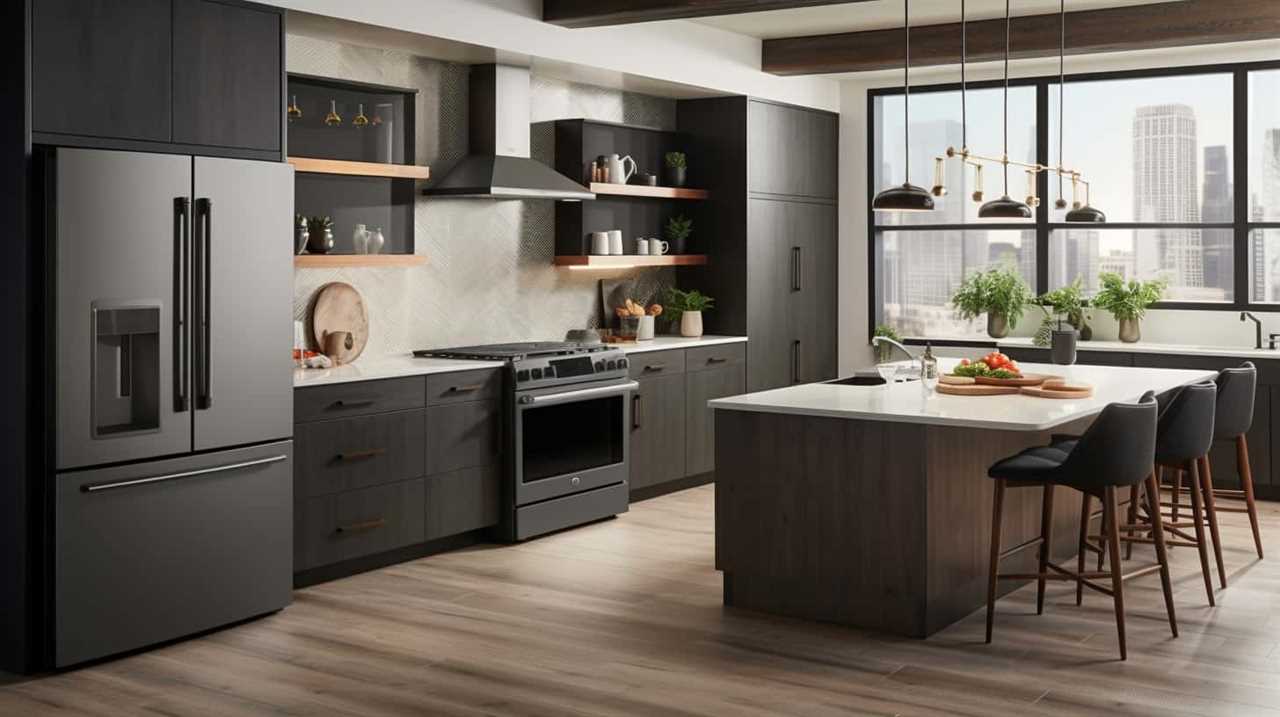
By opting for urinals, space can be utilized more effectively, enabling the installation of more units in the same area. This not only increases the capacity of the restroom but also reduces waiting times for users.
Additionally, urinals contribute to eco-friendly designs by conserving water. They generally require less water per flush compared to toilets, making them a sustainable choice for water-saving solutions. Now let’s explore the water-saving features explained in the next section.
Water-Saving Features Explained
How can urinals be a convenient sanitary solution with water-saving features?
Urinals aren’t only a practical option for public restrooms, but they also contribute to water conservation efforts. Here are three water-saving features and the benefits of water conservation that urinals offer:
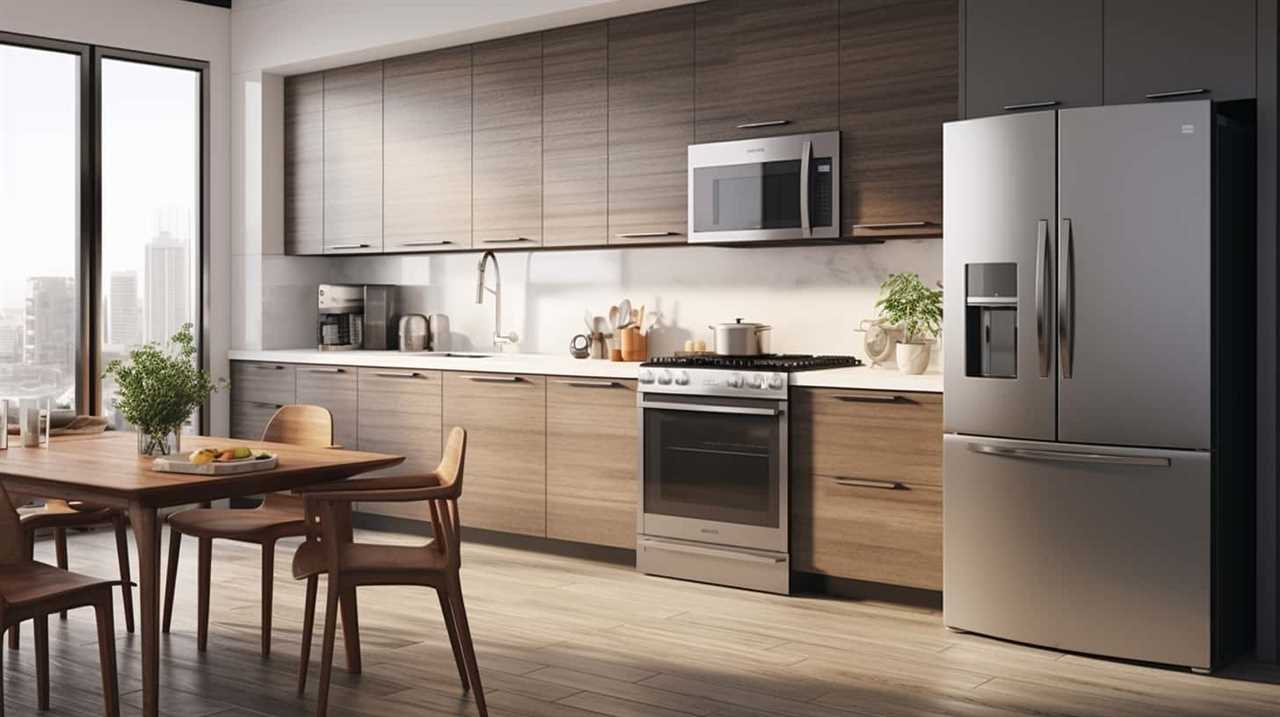
- Waterless Urinals: These urinals don’t require any water for flushing, eliminating the need for constant water supply. By eliminating water usage, they help conserve a significant amount of water.
- Sensor-Activated Flush: Many urinals come with sensor-activated flush systems that only release water when someone is using the urinal. This feature reduces water wastage as it ensures that water isn’t continuously flowing when not needed.
- Dual-Flush Mechanism: Some urinals have dual-flush capabilities, allowing users to choose between a full flush or a half flush based on their needs. This mechanism helps save water by providing options for different usage scenarios.
By incorporating these water-saving features, urinals play an essential role in water conservation efforts, making them an environmentally friendly choice.
Now, let’s move on to the next section and explore considerations when choosing urinals.
Considerations When Choosing Urinals
When selecting urinals, we prioritize functionality, maintenance, and aesthetics. Considering these factors ensures that you choose the right urinal for your needs. Maintenance is an essential consideration when it comes to urinals. Regular cleaning and maintenance help prevent issues such as clogs, odors, and buildup of bacteria. It is important to choose a urinal that is easy to clean and has accessible parts for maintenance purposes. Additionally, functionality plays a crucial role. Factors such as water efficiency, flushing mechanism, and splashback prevention should be taken into account. Lastly, aesthetics should not be overlooked as the urinal should complement the overall design of the restroom. By considering these aspects, you can ensure a well-maintained, functional, and visually appealing restroom environment.
| Considerations | Maintenance | Functionality | Aesthetics |
|---|---|---|---|
| Easy to clean | Regular cleaning | Water efficiency | Complementary |
| Accessible parts | Prevent clogs | Flushing mechanism | Design |
| Odor prevention | Splashback prevention |
Shower Facilities: An Essential Sanitary Appliance
To continue the discussion from the previous subtopic, we’ll now explore why shower facilities are considered an essential sanitary appliance. Showers aren’t only a place to cleanse ourselves, but they also provide numerous benefits for both hygiene and well-being. Here are three reasons why shower facilities are essential:
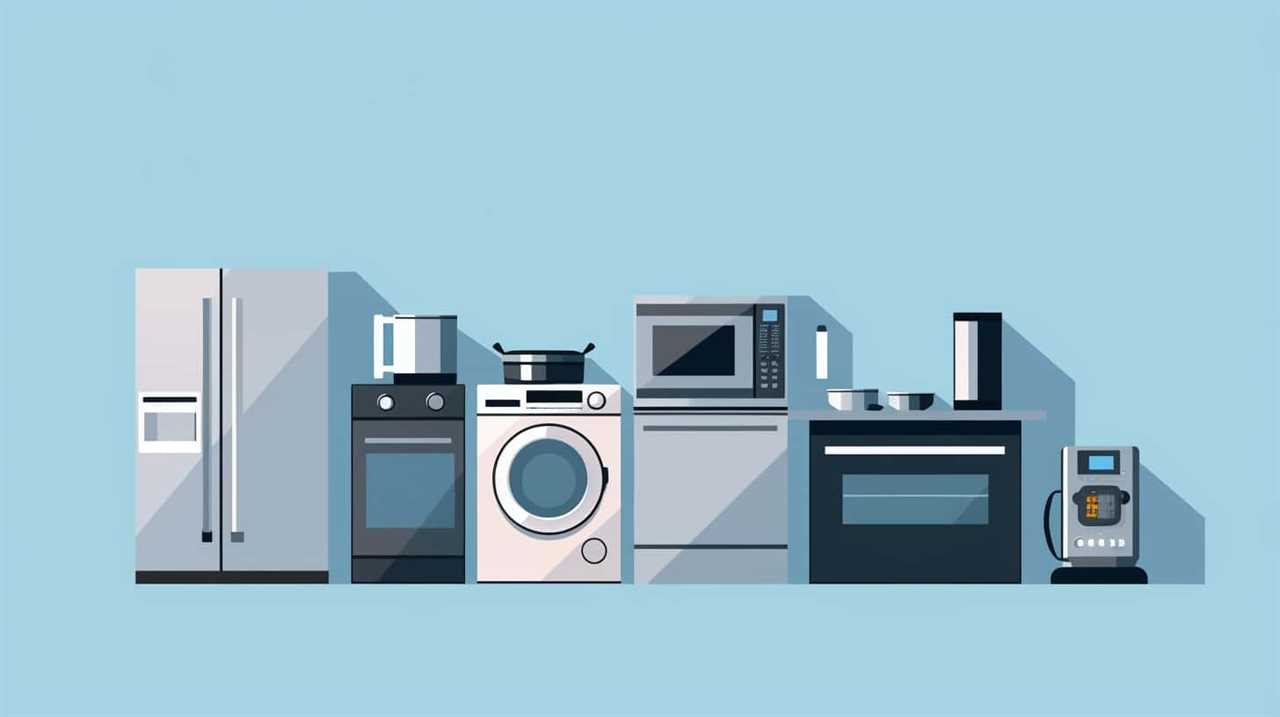
- Improved hygiene: Showers allow us to thoroughly clean our bodies, removing dirt, sweat, and bacteria. This helps prevent odors and keeps our skin healthy and fresh.
- Relaxation and stress relief: Taking a shower can be a soothing and rejuvenating experience. The warm water and steam can help relax muscles, relieve tension, and promote a sense of calmness.
- Variety of showerhead options: From rain showers to handheld sprayers, there are various showerhead options available to cater to individual preferences. These options allow for a personalized and enjoyable shower experience.
Proper shower maintenance is crucial to ensure optimal performance and longevity. Regular cleaning of showerheads and checking for leaks can prevent mold growth and keep the shower in good working condition.
Now that we understand the importance of shower facilities, let’s delve into the different types of showers available.
Different Types of Showers
Now let’s explore the various types of showers available.
When it comes to shower heads, there are several options to choose from. The most common types include wall-mounted, handheld, rain showers, and massage showers.
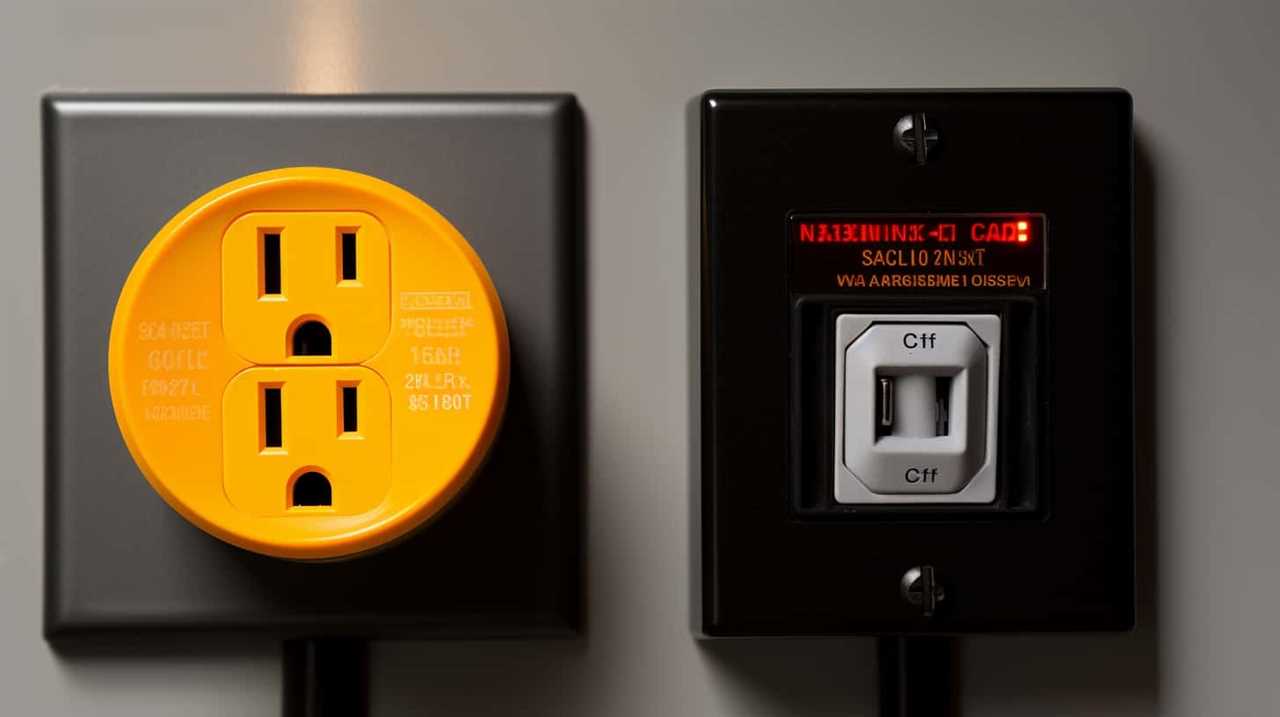
Wall-mounted shower heads are fixed to the wall and provide a steady stream of water.
Handheld shower heads, as the name suggests, can be held in your hand, allowing for greater flexibility and control.
Rain showers are designed to mimic the experience of standing in the rain, with a wide and gentle flow of water. They provide a luxurious and relaxing showering experience.
Massage showers, on the other hand, offer pulsating water streams that can help relieve muscle tension and promote relaxation.

Each type of shower head has its own unique benefits, but rain showers, in particular, are known for their soothing and therapeutic qualities.
The Role of Bathtubs in Personal Hygiene
As we transition from exploring different types of showers, it’s important to delve into the role of bathtubs in personal hygiene. Bathtubs play a crucial role in relaxation and can provide numerous benefits for skin health. Here are three key reasons why bathtubs are essential for personal hygiene:
- Relaxation: Bathtubs offer a soothing and calming environment where you can unwind after a long day. The warm water and gentle ambiance can help reduce stress and promote a sense of relaxation, promoting overall well-being.
- Skin Health: Soaking in a bathtub can be beneficial for your skin. The warm water helps to open up pores, allowing for deep cleansing and removal of impurities. It can also help to moisturize and hydrate the skin, leaving it soft and supple.
- Exfoliation: Bathtubs provide an ideal setting for exfoliating the skin. By using a gentle scrub or a loofah, you can effectively remove dead skin cells, promoting a healthier and more radiant complexion.
Incorporating regular baths into your personal hygiene routine can have a significant impact on your overall well-being and skin health.
Exploring Different Bathtub Options
When it comes to choosing a bathtub, there are a few key points to consider.

First, you’ll need to decide between a freestanding or built-in bathtub. Each option has its own advantages and drawbacks, so it’s important to weigh them carefully.
Additionally, the material and durability of the bathtub are important factors to consider, as they can greatly impact the longevity and maintenance of the fixture.
Freestanding Vs Built-In
Which bathtub option offers more versatility and style: freestanding or built-in? Let’s explore the advantages of freestanding tubs and the disadvantages of built-in tubs to help you make an informed decision.
- Freestanding advantages:
- Versatility: Freestanding tubs can be placed anywhere in the bathroom, allowing for flexible layout options.
- Style statement: These tubs come in various shapes, sizes, and materials, making them a focal point of elegance and luxury.
- Easy installation: Unlike built-in tubs, freestanding tubs don’t require complex plumbing or construction work, making them easier to install or replace.
- Built-in disadvantages:
- Limited placement options: Built-in tubs are fixed against a wall, limiting your bathroom layout possibilities.
- Lack of customization: Since built-in tubs are integrated into the bathroom design, they offer less flexibility in terms of style and customization.
- Complex installation: Installing a built-in tub often involves extensive plumbing and construction work, which can be time-consuming and costly.
Consider these factors when choosing between freestanding and built-in tubs to find the perfect option that suits your style and bathroom layout requirements.

Material and Durability
Now let’s delve into the various materials and durability factors to consider when exploring different bathtub options.
Material selection is an important aspect in determining the longevity and performance of your bathtub. There are several common materials used in bathtub manufacturing, including acrylic, fiberglass, porcelain-enameled steel, and cast iron.
Acrylic is lightweight, durable, and easy to clean, making it a popular choice. Fiberglass is another lightweight option, but it may not be as durable as acrylic. Porcelain-enameled steel is a budget-friendly choice, but it’s prone to chipping and scratching. Cast iron, on the other hand, is extremely durable but can be heavy and expensive.
To ensure the durability of your bathtub, proper maintenance is essential. Regular cleaning using non-abrasive cleaners and avoiding harsh chemicals can help prolong its lifespan. Additionally, using a bathtub mat or liner can prevent scratches and damage.

Frequently Asked Questions
How Often Should Sanitary Appliances Be Replaced?
We should consider the replacement frequency of sanitary appliances. Regular maintenance and inspection help determine when replacement is necessary. Ensuring proper hygiene and functionality is crucial to maintaining a clean and healthy environment.
What Are Some Common Problems or Issues With Toilets and How Can They Be Fixed?
Toilet clogs and leaks are common problems that can be fixed easily. We’ve dealt with these issues and can confidently say that regular maintenance, using a plunger or a plumber’s snake, and checking for leaks can resolve most toilet problems.
Are Bidets More Sanitary Than Toilet Paper?
Bidets are a game-changer in the bidet vs. toilet paper debate. They offer numerous benefits, including superior hygiene and cleanliness. Bidets leave you feeling fresh and confident, making them a more sanitary option.
What Are Some Eco-Friendly Options for Sinks and Showers?
Eco friendly sink alternatives and sustainable shower options are important considerations for those seeking to reduce their environmental impact. By choosing water-saving fixtures and using recycled materials, we can create a more sustainable and eco-conscious bathroom.

How Do Bathtubs Contribute to Personal Hygiene?
Bathtubs contribute to personal hygiene by providing a relaxing and nourishing experience with bath oils. However, the impact of using bath bombs on the environment is concerning. We should explore alternatives for a more sustainable bathing routine.
Conclusion
In the journey of personal hygiene, sanitary appliances serve as loyal companions, guiding us through the realms of cleanliness and comfort. Like trusted allies, toilets, sinks, showers, and bathtubs stand by us, ensuring our well-being. They’re the unsung heroes that cleanse away our worries and rejuvenate our spirits.
Let’s cherish these allegorical symbols of purity, for they’re the guardians of our physical and emotional health. Together, with the aid of sanitary appliances, we embark on a path of revitalization and serenity.



